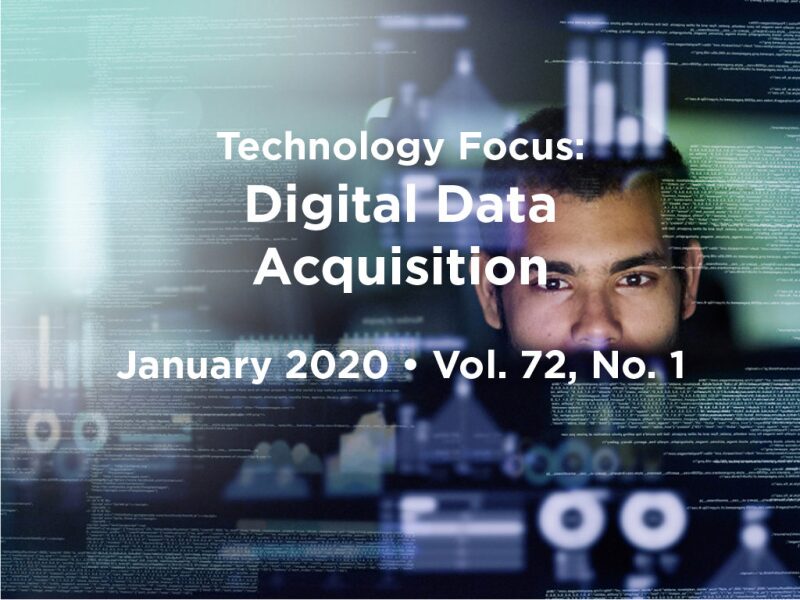Welcome to the debut of the Digital Data Acquisition feature in JPT. As the first reviewer for this feature, I look forward to guiding you through a selection of excellent papers that reflect our industry’s direction and future. The new feature comes from the desire of readers and reviewers to broaden the scope of JPT’s coverage of developments related to digital transformation and the many applications that the industry can derive from these exciting possibilities. This feature concentrates on the acquisition and accessibility of data, but, naturally, there may be crossover with other aspects of information acquisition and management also covered in the magazine. After all, the very concept of data, and the role it can play, is ever-changing, and we must adapt to take the best advantage of its possibilities.
The beginnings of the digital transformation effort of the oil and gas industry can be traced back at least a decade, when many of the oil majors started their initial efforts on smart fields. Different companies had different names for this concept. Shell called it “smart fields,” Chevron called it “intelligent oil fields,” BP called it “fields of the future,” and so forth, but the basic premise was the same: Data combined with software and technology will enable autonomous, continuous optimization of oil fields.
We have come a long way since then, but, with data being the backbone of such a transformation, one of the key impediments to this digital transformation has been the lack of standardized, high-quality, easily accessible data, making it difficult to realize the full potential of digital transformation. As such, this feature will focus on this important, but often neglected, aspect of digital transformation. In particular, it will focus on technologies to improve data accessibility and data acquisition and entirely new data sources and their applications.
On the topic of data accessibility, while there are many papers to choose from, including some focused on cloud-based big-data services and better data standards, I have selected an interesting paper on converting analog field data to digital using machine learning. Similarly, on the topic of improving data acquisition, there also are many interesting papers about the Internet of things, edge computing, and underwater lasers, for example; however, we will highlight a cloud-connected wireless intelligent completion system and its applications. Finally, on new data sources, there are here again many interesting papers, including some on the use of drones for pipeline monitoring, the use of electric potential for analyzing fractures, and fiber optics, for example. The paper chosen will demonstrate the applications of remote sensing imagery on Arctic operations. A common theme of these highlighted papers is the demonstration of real-field applications. I hope this will give you a taste of the state of the art on these topics and the road ahead.
This Month's Technical Papers
Artificial Intelligence Transforms Offshore Analog Fields Into Digital Fields
Field Trial of Cloud-Connected Wireless Completion System
Remote Sensing Imagery Improves Safety and Logistics of Arctic Operations
Recommended Additional Reading
IPTC 19045 Combining the Power of the Internet of Things and Big Data To Unleash the Potential of the Digital Oil Field by Abdullah AlBar, Saudi Aramco, et al.
SPE 190955 Enabling Autonomous Well Optimization by Using Internet-of-Things-Enabled Devices and Machine Learning in Bakken Horizontal Wells by Jack Freeman, Equinor, et al.
OTC 29130 Toward Automation of Satellite-Based Radar Imagery for Iceberg Surveillance—Machine Learning of Ship and Iceberg Discrimination by Desmond Power, C-CORE, et al.


